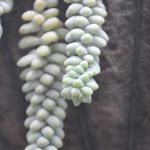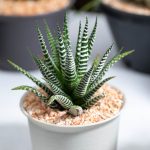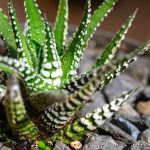Discover the art of nurturing the Haworthia attenuata, also known as the zebra cactus. It’s a versatile plant that thrives with minimal effort, making it an ideal addition to any collection.
Standing out among various Haworthia succulents, the Haworthia attenuata, named the zebra plant, stands as a top contender for being low-maintenance. Whether housed indoors in pots or out in the garden, this plant flourishes when nurtured carefully.
The visually appealing green and white pattern is the plant’s hallmark, attracting many admirers. Initially, I became captivated by one at a local nursery and couldn’t resist bringing it home. The zebra cactus often gets mistaken for an aloe due to its resemblance, hailing from the same subfamily as cacti.
This succulent perennial, known for its deep green hue adorned with bright white spots, thrives in locations that receive ample sunlight or bright light.
Essential Products for Zebra Haworthia Care:
- 6″ Wide Shallow Planter (perfect for accommodating its clustering growth pattern)
- Hoffman Organic Cactus & Succulent Mix
- Liquid Succulent Fertilizer
Quick Care Guide
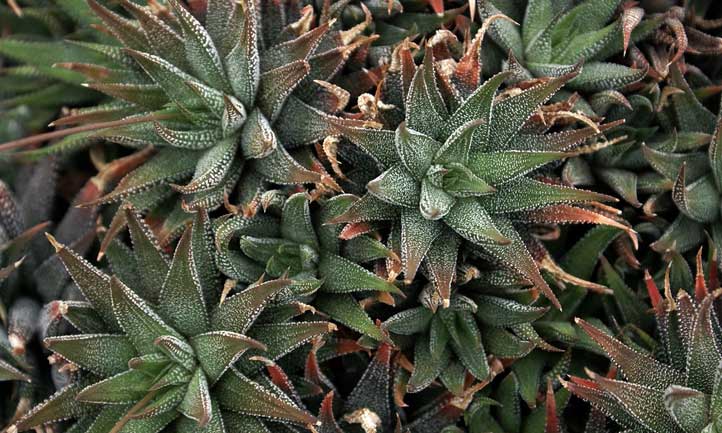

| Scientific Name: | Haworthia attenuata, Haworthiopsis attenuata |
| Common Name(s): | Zebra plant, Zebra cactus, Window plant |
| Family: | Asphodelaceae |
| Origin: | South Africa |
| Height & Spread: | 4-12″ tall and 6-26″ wide |
| Sun: | Part shade |
| Soil: | Slightly acidic, well-draining |
| Water: | Moderate to low, neglect tolerant |
| Pests & Diseases: | Root rot, scale, mealy bugs |
All About Haworthia Attenuata
A slow-growing succulent, the Haworthiopsis attenuata resembles an aloe plant and boasts a lengthy lifespan of up to 50 years. Belonging to the succulent plant family Asphodelaceae, it originates from the Eastern Cape province in South Africa.
Often mistaken for its counterpart, Haworthia fasciata, due to their similar looks, Haworthia attenuata sets itself apart with the presence of white tubercles on both leaf surfaces, unlike fasciata, which showcases them only on the undersides.
The elongated white tubercles adorning both sides of H. attenuata’s leaves are delicately spaced out. While the leaves lack fibrous textures, the presence of bumps or ridges indicates the location of the white stripes.
Types of Zebra Plant
Several varieties and subspecies of the Zebra plant exist, each offering distinctive characteristics. Here are some prevalent types of H. attenuata:
Haworthiopsis attenuata var. radula


Popularly known as the Hankey Dwarf Aloe, this H. attenuata variant features brownish-green leaves with an abundance of white tubercles compared to the regular variety. Its longer, more compact growth sets it apart.
Haworthiopsis attenuata f. variegata
The Variegated Zebra plant, a type of H. attenuata, reaches heights and diameters of up to 6 inches. Its dark green leaves sport yellow or cream-colored spots and bands, adding to its variegated appearance.
Haworthiopsis attenuata var. clariperla
This H. attenuata variety distinguishes itself with leaves uniformly covered in white tubercles.
Haworthiopsis attenuata ‘Crazed Glaze’
Distinguished by its elongated, slender leaves and a concentration of white tubercles at the leaf tips, this H. attenuata variation offers a unique aesthetic.
Haworthia Attenuata Care
Caring for a zebra plant (Haworthiopsis attenuata) is a straightforward task. Here’s a detailed overview of its basic requirements for successful cultivation of H. attenuata at home.
Light & Temperature
Regarding lighting, while the Haworthiopsis attenuata zebra plant thrives in bright light, it can adapt well to partial shade, demonstrating its versatility in varying light conditions. This adaptability makes it an excellent candidate for terrariums or indoor settings with limited natural light.
To promote optimal growth, ensure your H. attenuata receives a minimum of 6 hours of bright light daily. If growing indoors, position them on south-facing windowsills; for outdoor cultivation, choose sunlit locations for vibrant growth.
In case your indoor space lacks sufficient light, consider occasionally moving your Haworthiopsis attenuata outdoors to bask in full sun for a day or two before returning it indoors.
Temperature-wise, all species
Temperature and Growth
For optimal growth, Haworthia species thrive in warm summers and cool winters. While they can withstand mild frost, temperatures dropping below 45°F may lead to frost damage.
Water and Humidity
When it comes to watering Haworthiopsis attenuata, less is more. Overwatering is the primary culprit for plant demise. Indoors, only water when the soil is completely dry. Outdoors, maintain slightly dry to evenly moist soil due to the plant’s water-retaining leaves.
Soil
Provide well-draining, sandy soil for your Haworthiopsis attenuata zebra cactus. A cactus or succulent mix is suitable, with a slightly acidic pH range of 6.6. Adjust indoor potting mix by adding more sand and perlite as needed to enhance drainage.
Fertilizer for Haworthia Attenuata
To promote growth, apply diluted cactus fertilizer during the active growth periods of spring and summer. Refrain from fertilizing in fall and winter when the plant is dormant to avoid overstimulation.
Haworthia Attenuata Propagation
Offset division or leaf cuttings are effective methods for propagating Haworthia attenuata. Dividing offsets involves cleanly separating them from the mother plant and replanting in a new pot. For leaf cuttings, dry out a leaf and plant it in fresh potting soil until roots develop.
Repotting Your Zebra Plant
Choose wider, shallow pots for H. attenuata due to its clumping growth habit. As the plant produces offsets, either upscale the pot size or divide and replant new clusters in a cactus mix. Repotting ensures continued healthy growth.
Troubleshooting
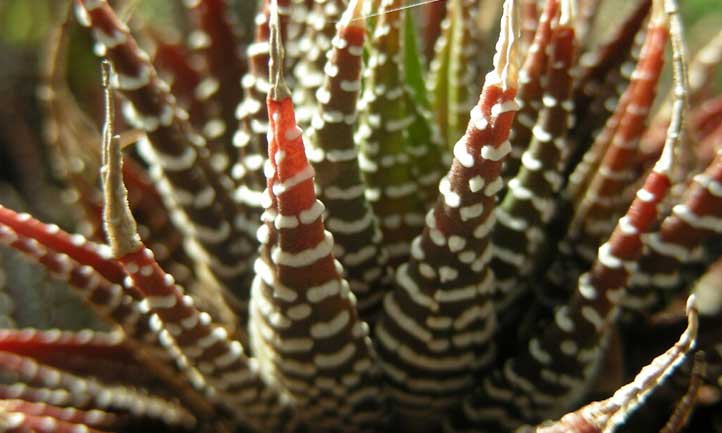

Encountering issues or pest attacks while growing zebra H. attenuata is common. Here are some potential problems and solutions.
Growing Problems
Browning leaves at the tips may indicate underwatering or sunburn. Address this by thoroughly watering the plant and relocating it to a shaded area to prevent further damage.
Pests
While generally pest-resistant, mealybugs and scale insects can infest Haworthiopsis attenuata. Combat these pests using pesticides, insecticidal soaps, or alcohol-soaked cotton swabs on affected areas.
Diseases
Overwatering is the primary cause of disease in zebra Haworthiopsis attenuata. Symptoms such as mushy leaves and stunted growth indicate root rot. Adjust watering practices, trim affected parts, and repot in well-draining soil to promote recovery.
Frequently Asked Questions
Q: How often do haworthias need to be watered?
A: Water thoroughly once the soil is completely dry, approximately every 3 weeks in summer and less frequently in winter.
Q: My haworthia is turning red…why?
A: Reddening of the plant is a common response to intense light exposure, altering its appearance without adverse effects.
Q: Will my haworthia bloom?
A: Bloom production in Haworthia is slow but achievable under suitable growing conditions detailed in this guide.
Q: How big does Haworthia attenuata get?
A: Haworthia can reach heights and diameters of up to 6 inches.
Q: Is Haworthia a good indoor plant?
A: Yes, the adaptable nature of zebra plants makes them excellent indoor companions for various light conditions.
Q: Should I remove Haworthia pups?
A: Yes, remove pups in spring and pot them individually for more plant clusters.
Q: Do Haworthia like small pots?
A: While they prefer wider pots over deeper ones, providing a snug fit for the root system is beneficial.
Q: Do Haworthia like to be crowded?
A: Haworthia tolerates slightly crowded conditions, making them ideal for compact living spaces.



